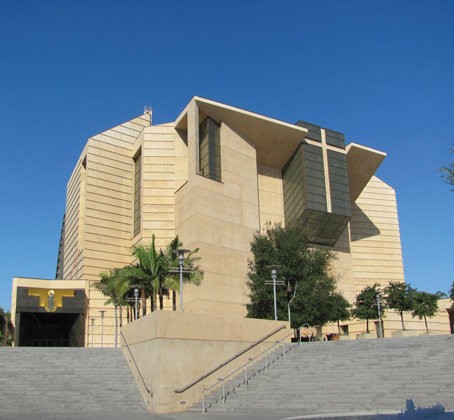Journey of light: LA’s Our Lady of the Angels

On a flight home from Los Angeles last year, I sat next to a young professor of landscape architecture who had just visited the city’s new Cathedral of Our Lady of the Angels. We discussed sacred architecture all the way to the East Coast, and he encouraged me to see the cathedral when I could. On my latest trip to Los Angeles I had a free day and decided to take my prayers to Our Lady of the Angels.
My prayers consisted of motherly things—intense and helpless worry, guarded gratitude, and concerns about my own work. I know I can pray at my desk, or in the convent chapel, or in my own garden with a cup of tea. But architecture shapes prayer and opens you to new ways of seeing and listening. It’s easier to pray in prayed-in places. I know I can expect to be changed in a sacred place.
Entering the lower plaza through the Shepherd’s Gate from a busy street in downtown Los Angeles, I find an oasis of generous outdoor spaces with fountains, palm trees, flowers and a grove of olive trees shading a grassy play area with remarkable animal statues waiting for a child’s imagination. The fountain nearest the entrance reminds me (carved in 36 languages) that “I shall give you living water.” I’m already enchanted. In just a few steps I’m in liminal space in the midst of a concrete city.




